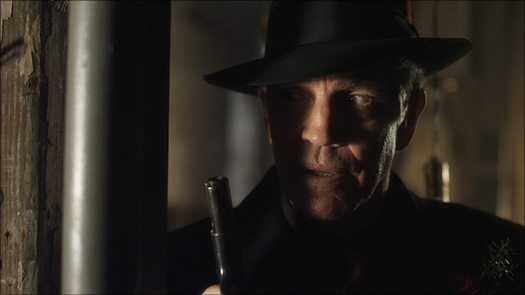Michal Dabal
Director of Photography

From our initial conversations, I knew that Tjardus wanted a noir-inspired look. We watched many films from that period including "On the Waterfront" (1954), which was shot by Boris Kaufman, “The Third Man” (1949) by British cinematographer Robert Krasker and too many films to name by the great cinematographers John Alton and James Wong Howe. From there we discussed how to take it in a new direction and experimented with modern looks. The visual structure for the film had to be simple and hold the story firmly together. Most importantly we had to create a believable environment for the characters.
The streets that the characters travel are unwelcoming and mean. Photographically speaking to me, it is a place of extreme contrast and dark shadows. We over-exposed the pools of light that Spider is walking through by 5 or 6 stops.
The warm and soft interiors of Tamara's loft, where Spider hides, were on the other side of that dark spectrum. Even then, in some scenes when the sun is shining, the lighting is harsh on Spider, burning through his surroundings, a symbol of his ruggedness at the beginning and arching into tranquility and maturity at the end of the film.

Every character in the story had his or her own lighting scheme. We tested with the actors for lighting during pre-production in Pittsburgh. The scenes with Eric Roberts (“Casket Mike”) weren’t scheduled until the third week of production, so we discovered his lighting when I first saw him on the set. In the scene where the gangsters are breaking into Didi’s loft, Eric is walking calmly yet maliciously through the scene. Right before rolling the camera, we put a piece of muslin on the ground with a 2k light bounced into it and that was it. That was his lighting right there.

On a 22-day shooting schedule, there’s not much time to think, so most of the decisions are instinctual. Gaffer Allan Barch and key grip Matthew Bulleri, along with the rest of the crew, were fundamental in translating these decisions into practice. And with Tjardus's support, his camera background and understanding of what we were doing, I had the freedom to push for a more daring look of the film.
Those 22 nights we spent filming "A New York Hearbeat" were among the most important moments in my life.
![]()